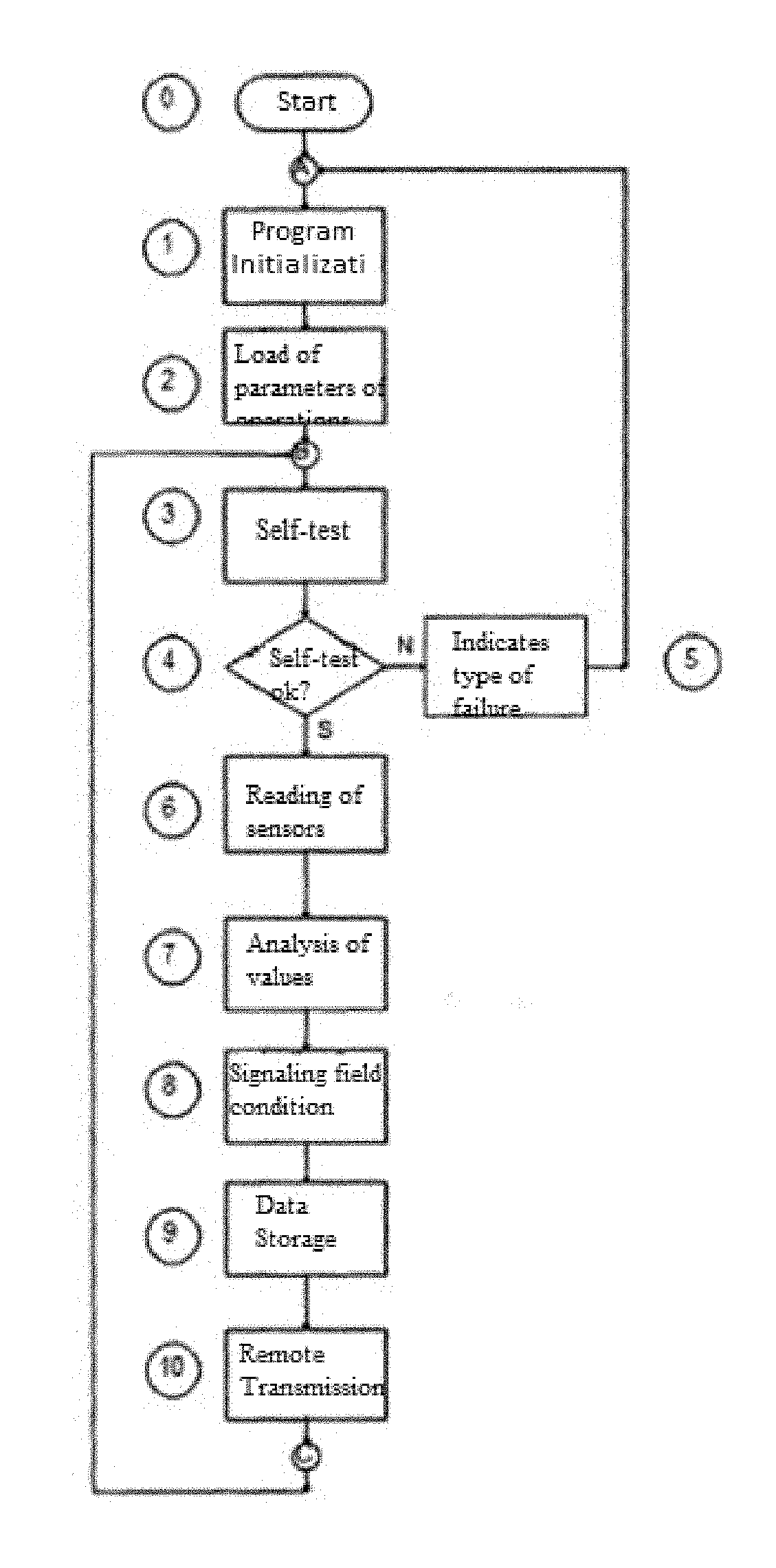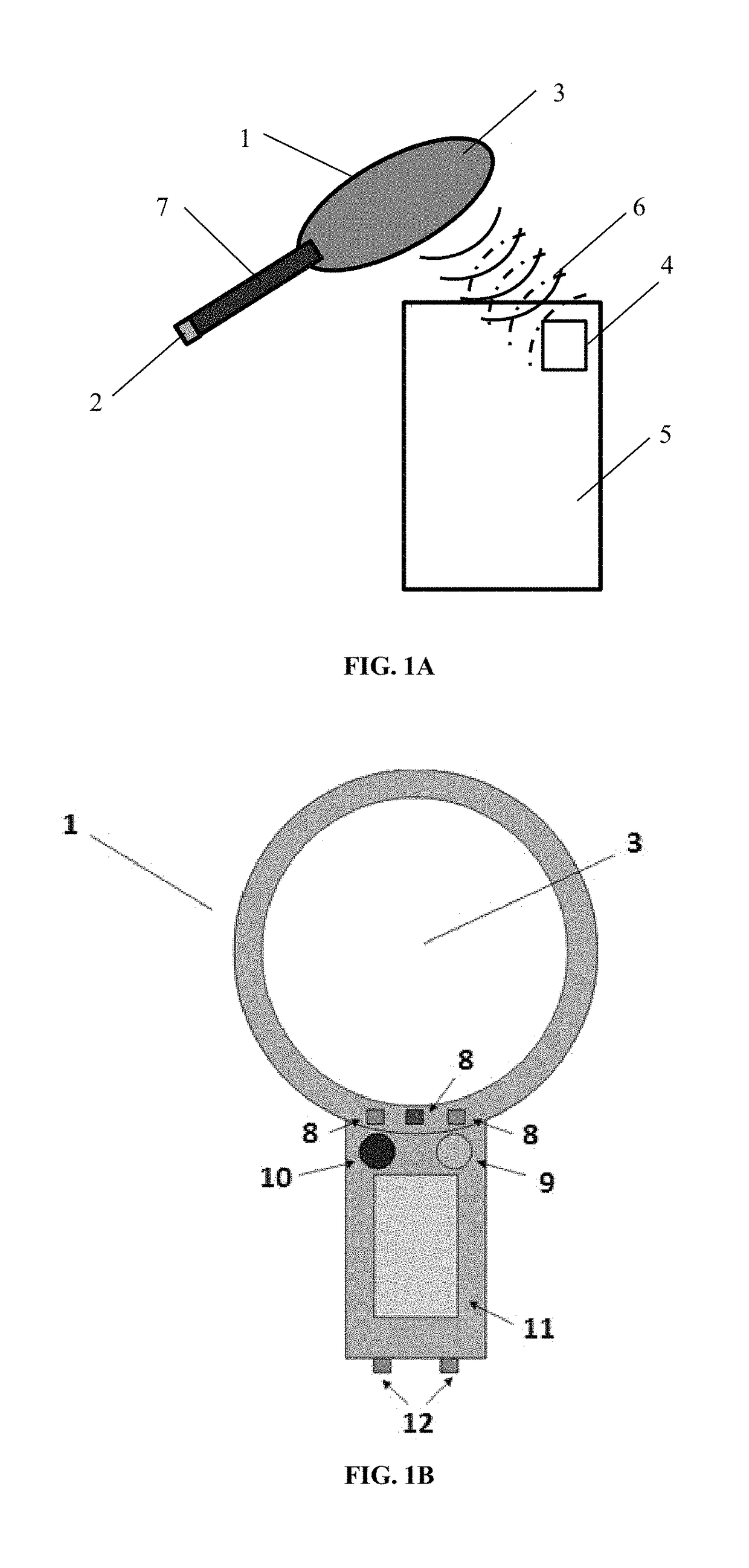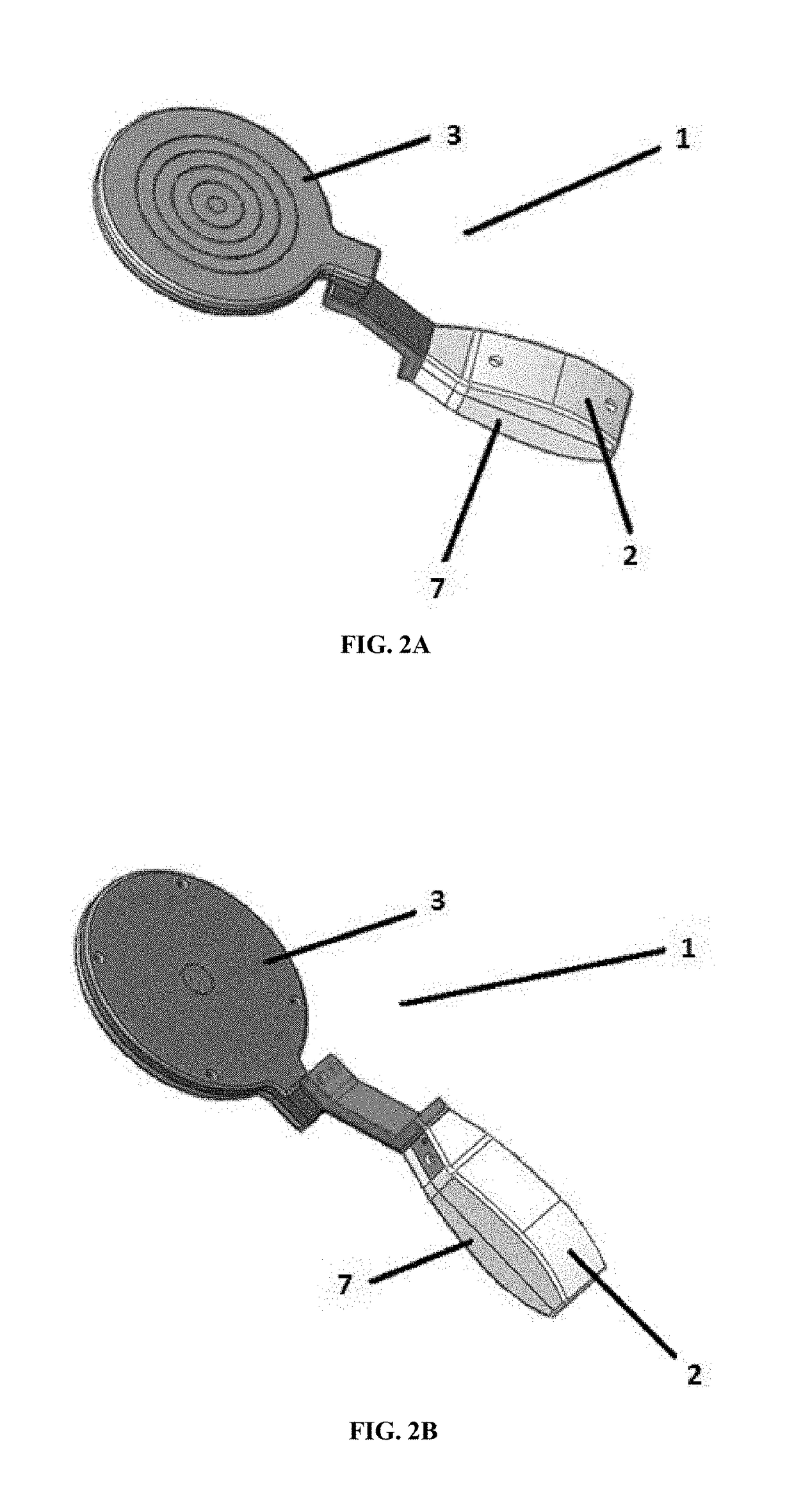Portable device for identification of surgical items with magnetic markers, method for identifying surgical objects with magnetic markers and system for the prevention of retention of surgical items with magnetic markers
a technology of magnetic markers and portable devices, applied in the field of electronic applications to medicine, can solve the problems of increasing the deployment cost of inventions, limiting the use of equipment by the team, and high cost of implementation, and achieves the effects of high cost, and increasing the cost of implementation
- Summary
- Abstract
- Description
- Claims
- Application Information
AI Technical Summary
Benefits of technology
Problems solved by technology
Method used
Image
Examples
example of invention embodiment
[0131]Upon being driven the On / Off button (10) of the portable identification device (1), the boot process self-test sequence is started. In these first few seconds, the portable identification device (1) signalizes (4) by means of blinking red lights that tests are being carried out. At the end of the self-test, if the operating conditions are in accordance with the minimum parameters required, the identification device will indicate (4) through handhold light signalization, in green color, and will start the magnetic marker identification process. If, after testing, the operating conditions are not satisfactory, the red light indication (4) will remain constant and the portable identification device (1) should be turned off (3). To assist in the identification of the problem found during the self-test, a sequence of beeps (4) at intervals of 0.5 s will provide a beep sound. At the end of the sequence there is a pause of 2 s, restarting the sequence.
[0132]After the self-test, the p...
PUM
 Login to View More
Login to View More Abstract
Description
Claims
Application Information
 Login to View More
Login to View More - R&D
- Intellectual Property
- Life Sciences
- Materials
- Tech Scout
- Unparalleled Data Quality
- Higher Quality Content
- 60% Fewer Hallucinations
Browse by: Latest US Patents, China's latest patents, Technical Efficacy Thesaurus, Application Domain, Technology Topic, Popular Technical Reports.
© 2025 PatSnap. All rights reserved.Legal|Privacy policy|Modern Slavery Act Transparency Statement|Sitemap|About US| Contact US: help@patsnap.com



